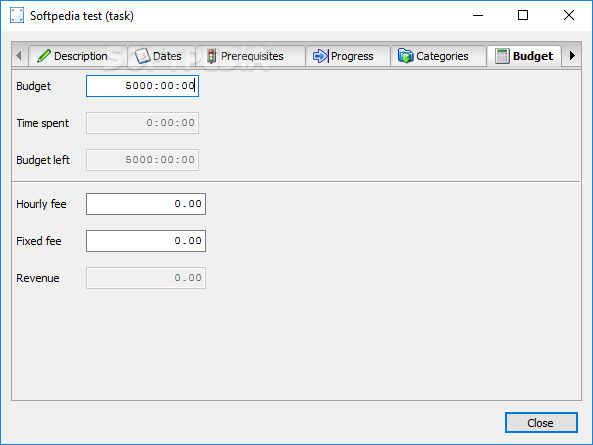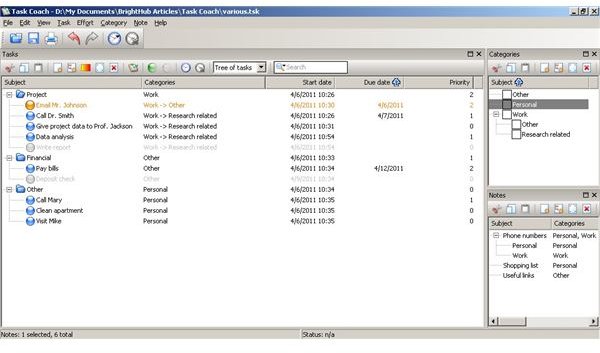

Device drivers can run in either user or kernel mode. Do these drivers run in Kernel mode, for maximum performance, or do they run in User mode, for maximum stability? In Windows, at least, the answer is it depends.
#Metoo task coach code
If we're only using two isolation rings, it's a bit unclear where device drivers should go- the code that allows us to use our video cards, keyboards, mice, printers, and so forth. Only rings 0 (Kernel) and 3 (User) are typically used. X86 CPU hardware actually provides four protection rings: 0, 1, 2, and 3. Instead of your entire system crashing, only that particular application crashes. If code executing in User mode attempts to do something outside its purview- like, say, accessing a privileged CPU instruction or modifying memory that it has no access to - a trappable exception is thrown. These two modes aren't mere labels they're enforced by the CPU hardware. The green line is total CPU time the red line is Kernel time. It's possible to enable display of Kernel time in Task Manager, as I have in the above screenshot. Most of the code running on your computer will execute in user mode. Due to the protection afforded by this sort of isolation, crashes in user mode are always recoverable. Code running in user mode must delegate to system APIs to access hardware or memory. In User mode, the executing code has no ability to directly access hardware or reference memory. Crashes in kernel mode are catastrophic they will halt the entire PC. Kernel mode is generally reserved for the lowest-level, most trusted functions of the operating system. It can execute any CPU instruction and reference any memory address. In Kernel mode, the executing code has complete and unrestricted access to the underlying hardware. In any modern operating system, the CPU is actually spending time in two very distinct modes: In Windows, this is Task Manager.ĬPU usage is generally represented as a simple percentage of CPU time spent on non-idle tasks. Once you know (roughly) how long they take, you can schedule them.Most operating systems have some method of displaying CPU utilization. Humans are terrible at estimating their time. This is a great idea for all of your recurring tasks. Then write out each step of a project, no matter how small. Start with the brain dump and initial triage.

This topic is bigger than what I’m going to get into here. What does that mean? But when it says call Tom in sales for June’s numbers your brain knows what to do next. It’s easier to take the next step than look at a task that says monthly report. One of the best things to do here is to make sure all your projects are broken down into the smallest next step. And you can see what needs to be done today or this week. You can see what you can delete or delegate. Often, the act of getting these thoughts out of your head and documented in front of you helps you prioritize what’s next. All your other lists.Īnd in front of you is likely something overwhelming.

Take 10 minutes and write down everything that’s on your mind. Your brain was designed to have ideas, not hold them. Use this information to change your future scheduling. How much time was spent on social media? What time was wasted on activities that were unnecessary? How much time are you spending on work tasks? Were there any surprises or did it make sense to you?

You stop what you’re doing every 30 minutes and write it down. This doesn’t mean that you sit down at the end of the day and write down what you think you did. Over the course of a week, document each task, in 30-minute increments. And you’re doing too much.ĭo you know where your time goes? Not just guessing, but truly knowing?ĭo you have a sense of all your tasks? Including activities, commitments, and upcoming projects?ĭo you spend your days with tasks running through your head?Īnd have you ever timed your tasks so that you know how long a recurring task takes? Track your timeĮven if you think you know where your time goes, it’s helpful to track your time. I’m sharing this story because your task list is long. I’m not taking the time to fix that and apparently, my kids don’t care! And next time they’ll be correct because they turned right side out again when she took them off! It seems to only bother the adults when kids wear something wrong-side out or backward. My daughter recently wore a pair of pants wrong side out because that’s how they came out of the drawer. I was spending too much time turning everything right side out. I realized that it was taking me too long to put away laundry because my kid’s clothes are often inside out.


 0 kommentar(er)
0 kommentar(er)
